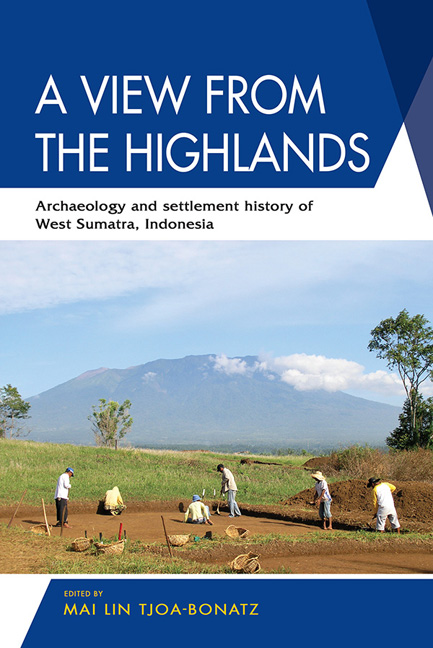Book contents
- Frontmatter
- Contents
- List of Tables
- List of Maps
- List of Figures
- List of Colour Plates
- Abbreviations and Acronyms
- Preface and Acknowledgements
- About the Contributors
- 1 Research History, Methods, and Objectives
- 2 Early Histories: Historiography and Archaeological Surveys
- 3 Excavations
- 4 Material Culture Studies
- 5 Conclusion
- Bibliography
- Index
- Plate section
1 - Research History, Methods, and Objectives
Published online by Cambridge University Press: 24 January 2020
- Frontmatter
- Contents
- List of Tables
- List of Maps
- List of Figures
- List of Colour Plates
- Abbreviations and Acronyms
- Preface and Acknowledgements
- About the Contributors
- 1 Research History, Methods, and Objectives
- 2 Early Histories: Historiography and Archaeological Surveys
- 3 Excavations
- 4 Material Culture Studies
- 5 Conclusion
- Bibliography
- Index
- Plate section
Summary
Research History (Mai Lin Tjoa-Bonatz)
In the early decades of the nineteenth century, colonial officials took an interest in the antiquities in the West Sumatran highlands (Anonymous 1855; Raffles 1991), inspiring epigraphic works on Adityavarman's inscriptions by philologists and archaeologists (Kern 1917a; 1917b; Machi Suhadi 1990; Casparis 1992; Djafar 1992, pp. 12–21; Budi Istiawan 2014; Bambang Budi Utomo 2007, pp. 51–82). Apart from Frederic M. Schnitger's reports (1937, pp. 13–15; 1964, pp. 167–72) on Buddhist remains connected to Adityavarman and the megaliths in the valleys of Mahat and Sinamar in the regency of Lima Puluh Kota, scholars have prepared brief inventories of the antiquities found in the region, including Tanah Datar (Krom 1912; Bronson et al. 1973, pp. 13–14). Since 1977 the regional conservation body BPCB (formerly BPPP) in Batusangkar, working under the authority of the Ministry of Culture, has been locating, documenting, and protecting heritage sites that were previously unrecorded and largely unknown. However, the rich data in their constantly updated heritage inventory has not yet been systematically examined to understand spatial patterning in the ancient landscape of Tanah Datar.
The first Indonesian archaeologists to work in the region were interested in the megaliths in Mahat. In 1984 the PUSLIT ARKENAS and the Indonesian Directorate for the Preservation and Protection of National Heritage carried out a series of short-term archaeological projects and restoration work on stone monuments, concentrating on the Lima Puluh Kota regency. This work produced confidential reports (Yuwono Sudibyo 1984; Tim Peneliti Tradisi Megalitik Sumatera Barat 1984; 1985).
For a long time, the best systematic attempt to record and interpret the archaeological monuments, finds, and inscriptions in Tanah Datar and its neighbouring regency to the north, Lima Puluh Kota, was a series of articles by John Miksic (1985a; 1986; 1987; 2004; 2009) based on his fieldwork as well as external sources. He focused on megaliths (locally called batu tagak) and their relation to similar stone monuments on the Malay Peninsula in the states of Negeri Sembilan and Melaka in Malaysia. Miksic (1985a, p. 79) created the description of kris-hilt shaped megaliths, erected stones which are mostly rectangular but are curved at the top so that they resemble the hilt of a kris (see Figures 1.1 and 1.2).
- Type
- Chapter
- Information
- A View from the HighlandsArchaeology and Settlement History of West Sumatra, Indonesia, pp. 1 - 29Publisher: ISEAS–Yusof Ishak InstitutePrint publication year: 2019

